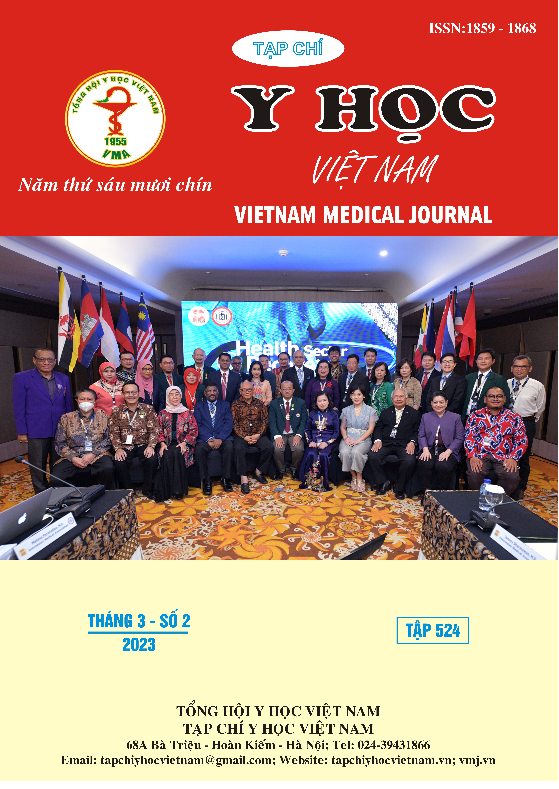THE MORPHOLOGY OF THE TEMPOROMANDIBULAR JOINT OF CONE BEAM CT IN HANOI’S PEOPLE
Main Article Content
Abstract
Cone-beam computed tomographic (CBCT) imaging is a useful method for dental diagnosis and treatment, especially to observe the temporomandibular joint. The aim of this study was to identify morphology of the temporomandibular joint, looking for the relationship between morphology of the temporomandibular joint and maloclusion. CBCT of 59 patients were used. Results were as follows: The length of right mandibular condylar is 18,46 ±2,80 mm, the width of right mandibular condylar is 8,51 ± 1,22 mm, the height of right mandibular condylar is 21,22± 3,13 mm, the thickness of right mandibular fossa is 1,62±1,04 mm, the width of right mandibular fossa is 17,92 ± 3,71mm, the depth of right mandibular fossa is 8,76 ± 1,76 mm, the number of air cavities in right articular tubercle is 1,42 ± 0,83, the inclination of right articular tubercle is 39,45 ± 8,72º, the height of right articular tubercle is 7,21 ± 1,64mm. The length of left mandibular condylar is 17,91 ±3,54mm, the width of left mandibular condylar is 8,17±1,64mm, the height of left mandibular condylar is 21,98±3,26 mm, the thickness of left mandibular fossa is 1,66 ± 1,04 mm, the width of left mandibular fossa is 18,55 ± 3,12 mm, the depth of left mandibular fossa is 8,68 ± 1,26mm, the number of air cavities in left articular tubercle is 1,34 ± 0,74, the inclination of left articular tubercle is 38,85 ± 8,46º, the height of left articular tubercle is 7,38 ± 2,22mm. The length of mandibular condylar, the width of mandibular condylar, the height of mandibular condylar, the height of mandibular condylar, the number of air cavities in articular tubercle have strong positive linear correlation. The width of mandibular fossa, the inclination of articular tubercle has medium positive linear correlation. The characteristic of right temporomandibular joint in men are higher than in women.
Article Details
Keywords
the temporomandibular joint, maloclusion, cone-beam computed tomographic
References
2. Burke G., Major P., Glover K., Prasad N., “Correlations between condylar characteristics and facial morphology in Class II preadolescent patients”, American Journal of Orthodontics and Dentofacial Orthopedics, vol 114 (3), tr 328–36, 1998.
3. Paknahad M., Shahidi S., “Association between mandibular condylar position and clinical dysfunction index”, The Journal of Cranio-Maxillofacial Surgery, vol 43 (4), tr 432–6, 2015.
4. Lê Văn Sơn., Bệnh lý và phẫu thuật hàm mặt: Tập 2. NXB Giáo dục Việt Nam, 2020. 4 (12): tr 151 - 161.
5. Jihad M Jomhawi, Abdulsalam M Elsamameh, Ahmad M Hassan, “Prevalence of Temporomandibular Disorder among Schoolchildren in Jordan”, Int J Clin Pediatric Dent, 2021, 14(2): 304-310.
6. Tecco S., Saccucci M., Nucera R., Polimeni A., Pagnoni M., et al., “Condylar volume and surface in Caucasian young adult subjects”, BMC Medical Imaging, vol 10, tr 28, 2010.
7. Katsavrias EG, “Changes in articular eminence inclination during the craniofacial growth period”, Angle Orthod, vol 72, tr 258–264, 2002.


